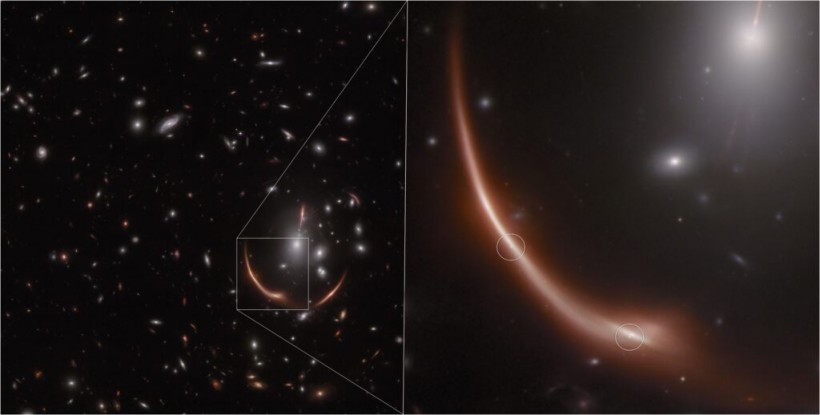NASA's James Webb Space Telescope has witnessed a unique celestial event as it observed a second supernova explosion in a distant galaxy named MRG-M0138.
Through an effect called gravitational lensing, which Albert Einstein first predicted, NASA said MRG-M0138 appeared warped by the powerful gravity of the intervening galaxy cluster named MACS J0138.0-2155.
This observation, part of Webb Director's Discretionary Time program 6549, builds on the initial discovery of a supernova in MRG-M0138 using NASA's Hubble Space Telescope in 2016.

Supernovae Requiem and Encore
The unique aspect of this finding is that two separate supernovae, named Requiem (2016) and Encore (2023), have occurred in the same distant galaxy.
Astronomers Justin Pierel and Andrew Newman shed light on the significance of this discovery. Pierel, a NASA Einstein Fellow at the Space Telescope Science Institute, explained the impact of a supernova exploding behind a gravitational lens.
He likened the light from such an event to multiple trains leaving a station simultaneously but taking different routes and arriving at their destination at varying times.
Similarly, the images of gravitationally lensed supernovae appear to astronomers over days, weeks, or even years. The rarity of such multiply-imaged supernovae poses a challenge and an opportunity for cosmology.
Pierel noted that these occurrences provide a unique opportunity to measure the expansion rate of the universe, known as the Hubble constant.
The time delays in the appearance of supernova images offer a means to investigate the cosmic landscape. Requiem, the 2016 supernova in MRG-M0138, stood out due to its exceptional distance of 10 billion light-years.
Being of type Ia, it served as a crucial "standard candle" for measuring cosmic distances. However, its discovery in 2019, long after it had faded from view, prevented a comprehensive study of the Hubble constant at that time.
Read Also: NASA's James Webb Space Telescope Captures Captivating Images of Uranus and Its Rings
Supernova Encore
The recent discovery of a second gravitationally lensed supernova in the same galaxy, dubbed Supernova Encore, added a new layer of significance to the cosmic narrative.
Encore, confirmed as a type Ia supernova, becomes a celestial sibling to Requiem, making them the most distant pair of standard-candle supernova siblings ever identified.
The astronomers express the fortuitous nature of Encore's discovery and highlight ongoing efforts to study it through a time-critical director's discretionary program. The Webb images will play a crucial role in measuring and confirming the Hubble constant based on this multiply-imaged supernova.
As they look forward, astronomers anticipate the last hurrah of Requiem and Encore, with infrared observations capturing their final appearances around 2035.
This celestial spectacle is poised to offer a new and precise measurement of the Hubble constant, adding valuable insights to our understanding of the expanding universe.
"By measuring differences in the times that the supernova images appear, we can measure the history of the expansion rate of the universe, known as the Hubble constant, which is a major challenge in cosmology today," Pierel and Newman wrote in a blog post.
"The catch is that these multiply-imaged supernovae are extremely rare: fewer than a dozen have been detected until now," they added.
Related Article: NASA's James Webb Space Telescope Captures Image of an Exploded Star in High-Definition View










